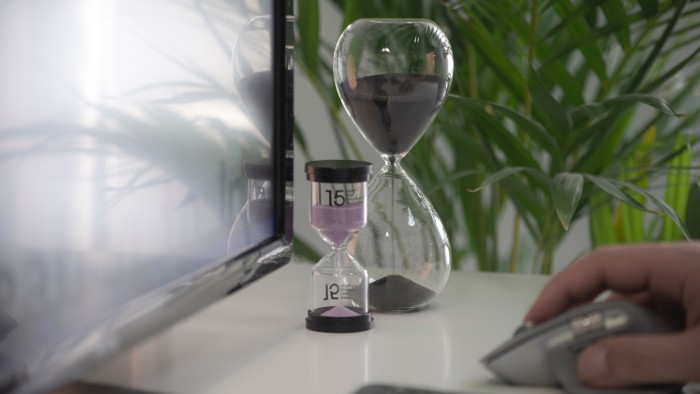F**k specification briefs, or more politically correct: why your specifications are (almost) useless
A specification brief is fine if you already have expert knowledge of the subject and want to hire a contractor for a particular task. But for complex systems such as new technologies, you will be confronted with many issues and questions when writing such a document. Do you really need it? That is the question!

Does the writer have all the information?
Often, it is up to you, the client, to write the document, but do you have all the necessary knowledge to write it? A product is often a mix of a business idea (for which you are an expert) and a technological expertise on how to realize it (for which you are looking for a service provider). It does not seem wise to us that one party should define the whole project. Downloading a template found on the web, quickly adapting it to your project, adding sentences that have little value such as "the project should be simple", "delivered in time", "the website should be ergonomic", it is a waste of time and the document will not be of quality.
💡 The result: you guessed it, if everyone is not involved the specification will not be complete and will therefore have little value.
Specifications limit collaboration and communication
Writing a document that is too detailed, too structuring, can have negative effects from the start of the collaboration between your team and the external service provider. Indeed, having a procedure to follow that is too precise can quickly limit creativity, ideas, proposals, evolutions, etc. The work that should be in symbiosis between the two parties is dictated by the famous brief and mutual trust can take longer to build.
💡 The result: communication, trust will take longer to build. You also limit creativity and beneficial developments to your project during the design process.
What if it's just not the right time?
The specifications are written first, but when you only have an idea, a vision, the beginning of a framework, it is perhaps a little early to start defining all the aspects of the project? What do you think? A project is bound to evolve over time, your product is digital and can be abstract, therefore difficult to describe in a precise way. Our world evolves very quickly and new ideas can and will arise during the realization of your project, and limiting yourself to a fixed and non-evolving description will prevent you from taking advantage of it.
💡 The result: you leave little room and flexibility for new ideas, technological developments, etc.
Ok Right ! No specification brief, so what do we do?
Without specifications, you are afraid to move forward in the unknown? Of not thinking about everything? That the project will go in all directions? Don't worry, here are the 3 axes that we have tested, optimized and adopted for more than 10 years with our clients. And it works for everyone!
#1 Less talk, more design!
It's best to travel light, with little documentation and a focus on what needs to be done first in order to deliver a useful result as soon as possible. With this in mind, our process is based on the creation of a mockup & design that will give you a graphic vision of your final product. From day one of your project, a series of workshops are organized with the experts to capture your need and vision.
💡 Advantages: The project takes shape quickly, you visualize your ideas as you go, iterations can be done from the early stages of the project. Collaboration and communication with business experts is done from the beginning.
#2 A collaboration in full confidence
If you're looking for an external provider to help you design your idea, it's because of their expertise, not because you're looking for a simple executor. Having the chance to be accompanied by a dedicated partner who is passionate about your subject and experts who will be there to realize the best version of your vision with you is worth the investment. It is important to create an environment of trust, to foster communication for a smooth development process.
💡 Advantages: you get advice for technical choices, tools, languages, etc. The agency or provider is immersed in your environment and can better understand your idea, but also your challenges and your objectives. These two points will be beneficial for your project and will make it, in the long run more robust.
#3 Evolve together
Without the limits of the specifications, you have all the freedom to make your project evolve at any time! At first, we advise you, of course, to focus on the main need, the goal being to quickly release a first version. This one will then be brought to evolve, according to the market, your ideas, your user feedbacks.
💡 Advantages: you quickly have a first version delivered and operational that will respect your objectives. Then, the project continues to live, evolve and grow at the pace that suits.
The best example in the world: Space X
One of the best examples of this practice (but also one of the best examples of the mastery of a product life cycle and its continuous improvement) is without a doubt the company Space X. While they plan to build the first rockets to carry astronauts to Mars or the Moon, they have no specifications. Everyone's attention is focused on the questions that the teams are able to answer at the moment. The rest? We'll figure it out later. What's the point of thinking now about how to land a rocket on the moon when we don't even know if the one we're building now will reach the upper atmosphere on the first launch?
This does not mean that the master plan does not exist, on the contrary, it is essential, but this state of mind avoids wasting time on subjects that are not important in the immediate future and that can be dealt with in a much more relevant way when it becomes really necessary.
As you can see, without the limits of the specifications, you have all the freedom to make your project evolve at any time! At first, we advise you, of course, to focus on the main need, naturally, this one will evolve over time, according to the market, your ideas or the feedback from your customers and users. Don't focalize on the small details when coming to talk to us (no need to know the pixel size of a button, or the minimum length of a customer account password), use this saved time to :
- Define a vision and goals you want to achieve in the short and long term
- See if there are websites & apps you like and dislike for inspiration
- Have an idea of your business model, as it will drive a lot of your future decisions
Let's get started? Get in touch with us!


